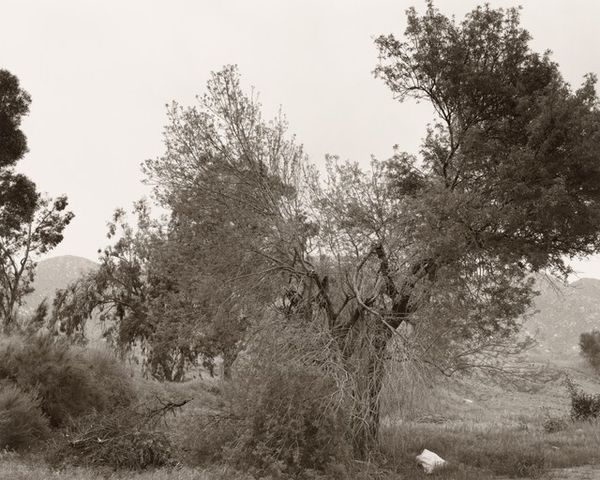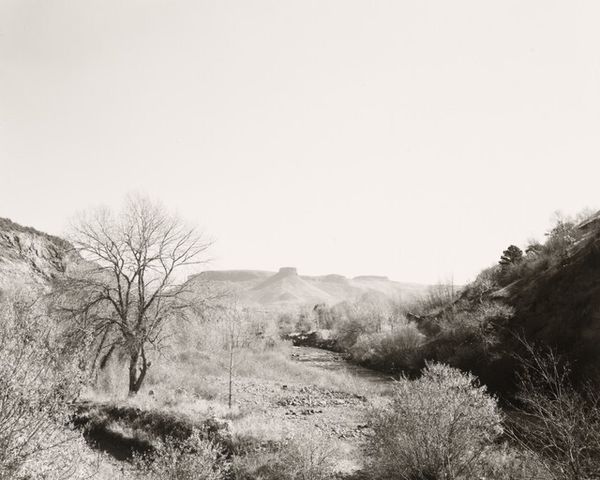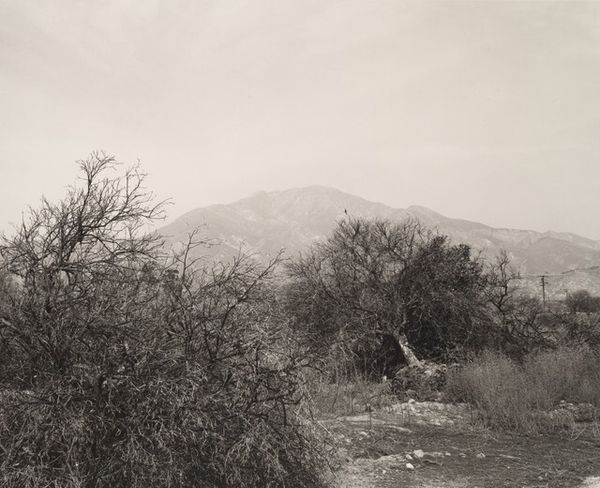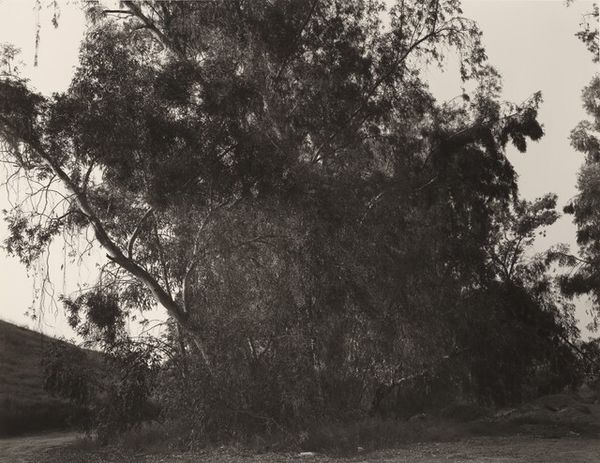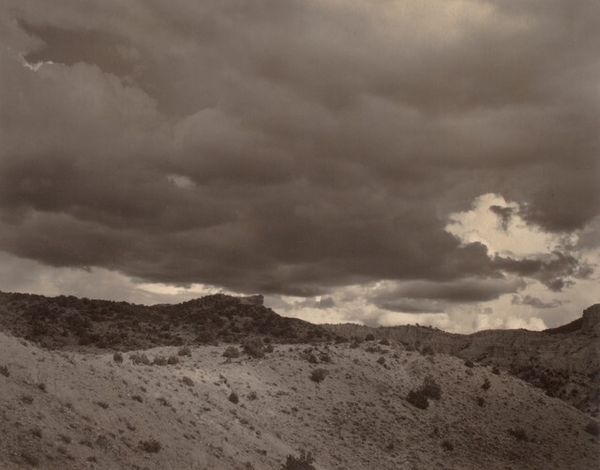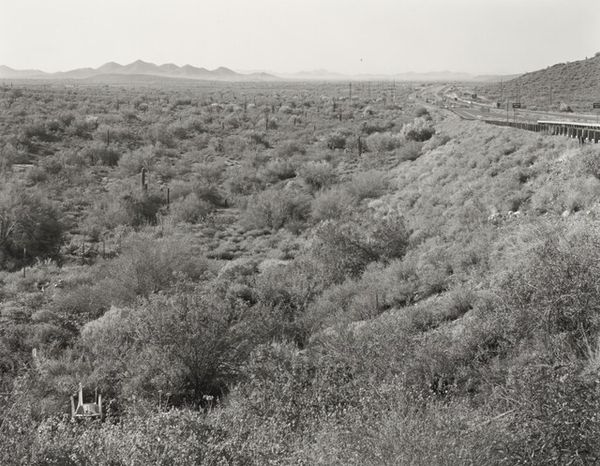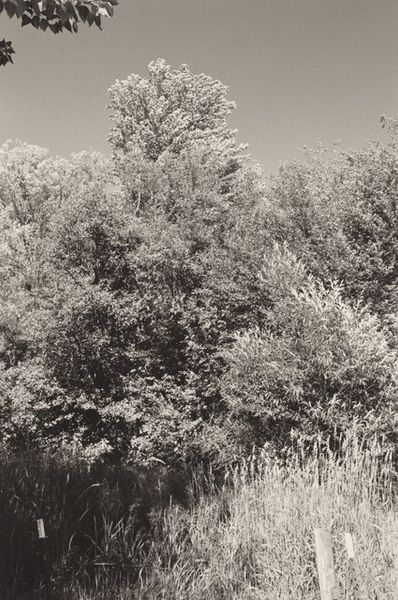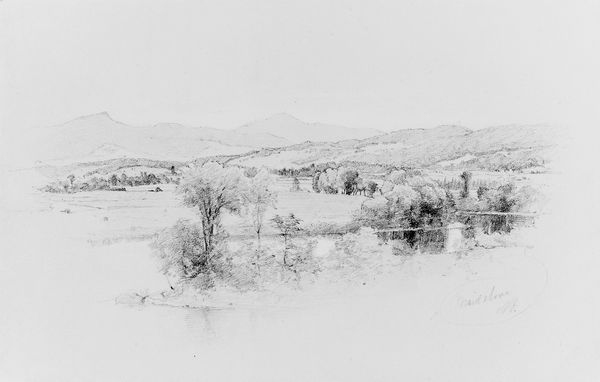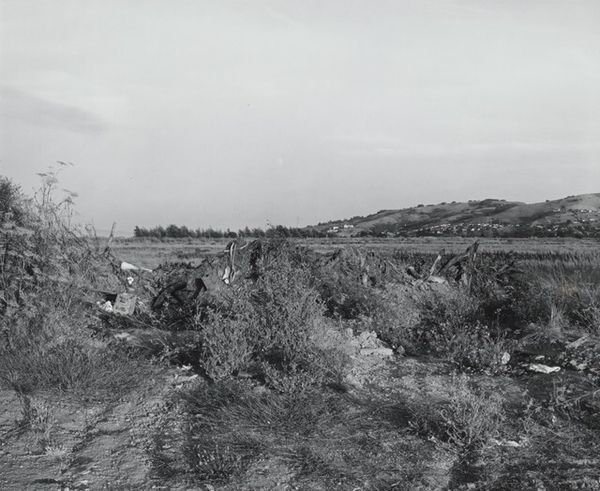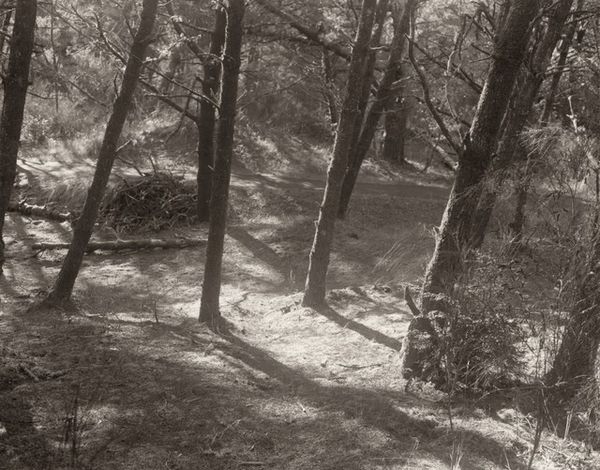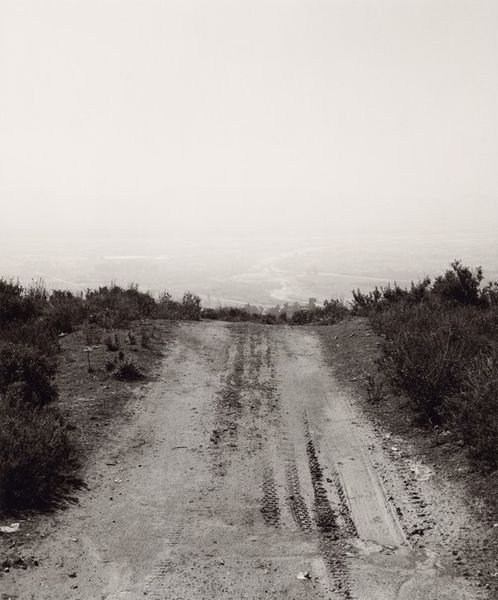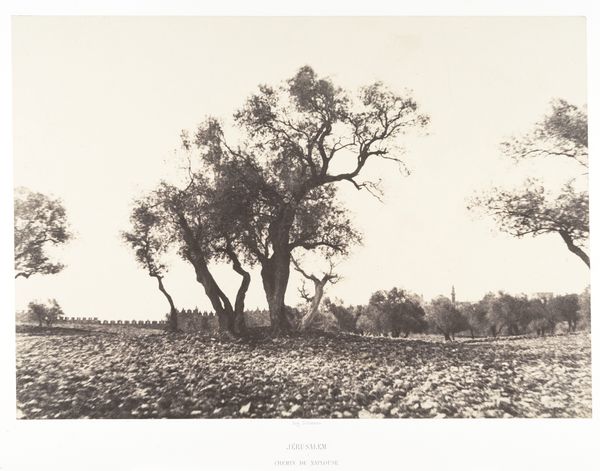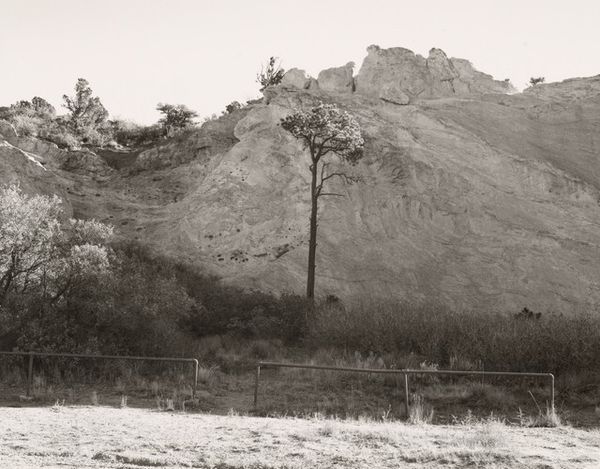
Santa Ana Wash, Norton Air Force Base, San Bernardino, California 1978
0:00
0:00
photography, gelatin-silver-print
#
landscape
#
photography
#
sky photography
#
gelatin-silver-print
#
monochrome photography
#
realism
#
monochrome
Dimensions: image: 38.1 × 47.7 cm (15 × 18 3/4 in.) sheet: 40.4 × 50.5 cm (15 7/8 × 19 7/8 in.)
Copyright: National Gallery of Art: CC0 1.0
Curator: This is Robert Adams' photograph, "Santa Ana Wash, Norton Air Force Base, San Bernardino, California," taken in 1978. It's a gelatin-silver print. Editor: My initial reaction is one of quiet unease. The monochrome palette, combined with the rather dense, almost claustrophobic vegetation, creates a slightly unsettling atmosphere. There’s also that plane…it feels like it’s watching. Curator: That sense of unease is, I think, precisely what Adams intended. He was deeply concerned with the impact of suburban development on the American West. The photograph depicts a natural landscape bisected and dominated by the presence of the airbase. Editor: So, it's about the tension between nature and industry, depicted through this materiality that speaks of both precision and a kind of gritty reality. You know, the process of gelatin-silver printing is interesting here. It's an older technique, creating subtle tonal variations, yet so suitable for a scene where contrasts abound between natural and artificial structures. Curator: Exactly. Adams was very deliberate in his use of photography as a medium to document these changing landscapes. It's important to understand how places are shaped by government policies and infrastructure projects. Norton Air Force Base, for instance, played a significant role in the region's economy and development but also symbolized the military-industrial complex. Editor: And it shows. Even that faint plane is rendered as just another aspect of industrial incursion on land; how it shifts material understanding about boundaries. It certainly speaks to a much broader historical context – land usage and development—beyond the pure aesthetics. I suppose what unsettles me, finally, is that its vision still endures in California landscapes. Curator: Indeed. Adams' work is powerful because it invites us to reflect on these transformations, even now, years later. His images invite us to understand the landscape and the history of the space it represents. Editor: And by looking closer at that intersection –where land becomes commodity–one starts seeing how progress isn't all we thought it would be. Thanks to these images for enabling us to rethink how labor shapes the materials and how, in turn, shape us.
Comments
No comments
Be the first to comment and join the conversation on the ultimate creative platform.
